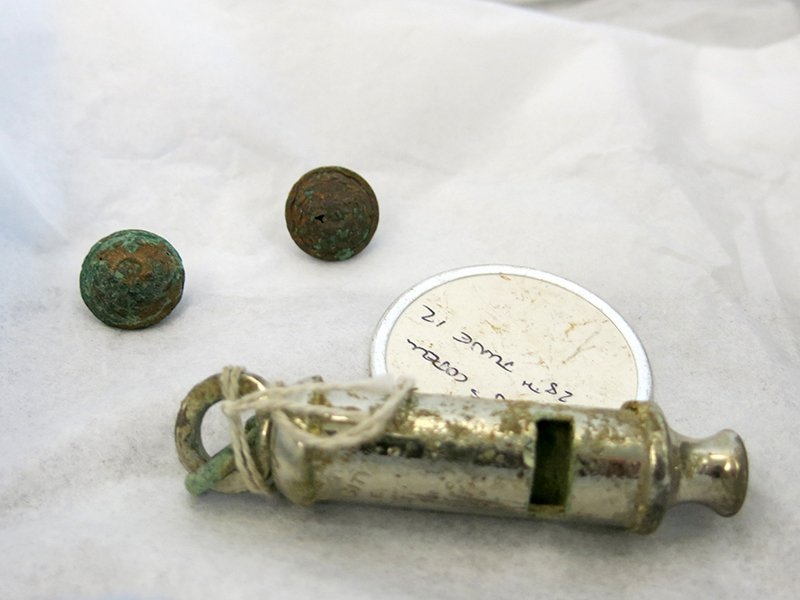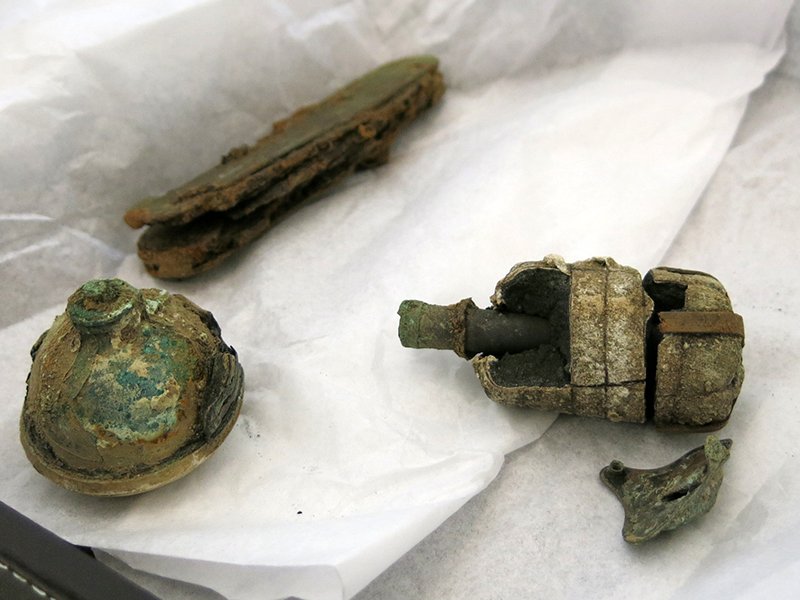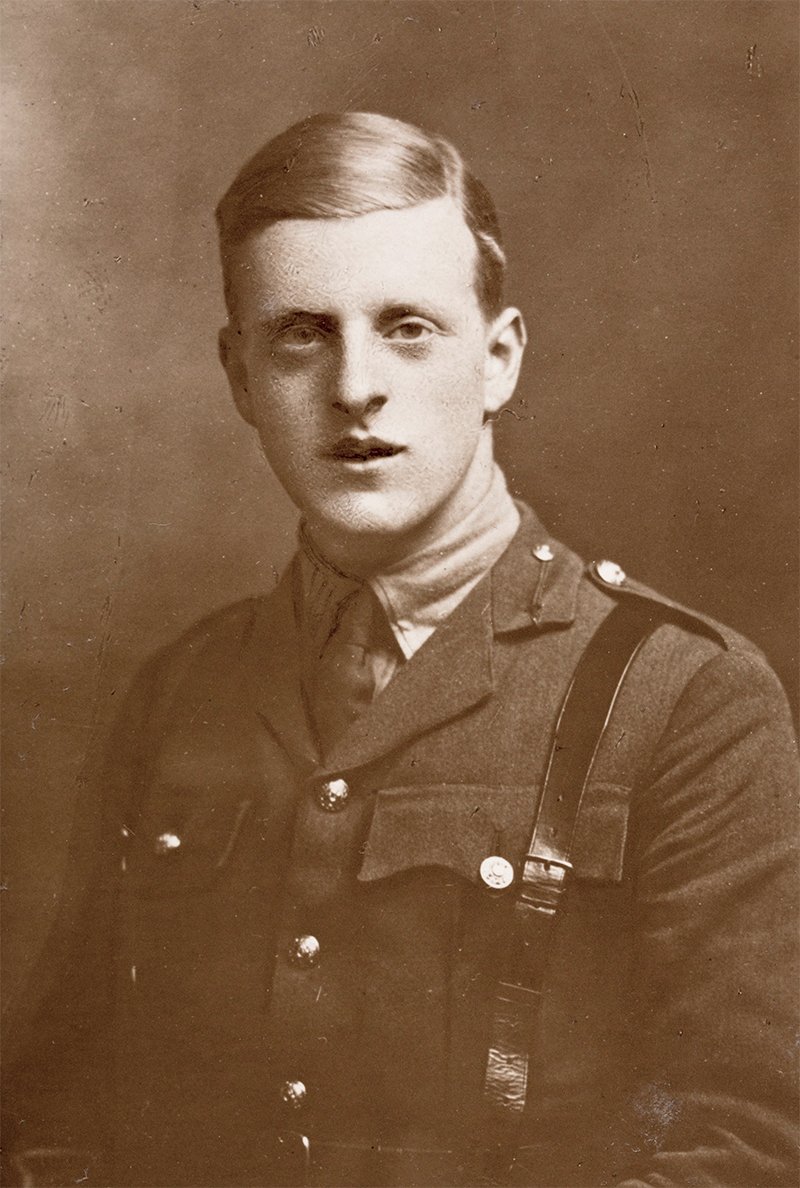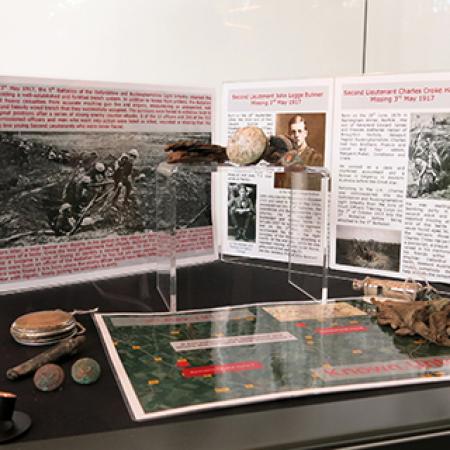Could First World War clues point to Mertonian?
On Tuesday 17 May the Soldiers of Oxfordshire Museum in Woodstock took possession of a number of artefacts that were discovered in 2013 along with the remains of a British soldier of the First World War. After the discovery was made, work began to try to identify the soldier, and following extensive research two men have been established as the most likely candidates. One of these men was a Mertonian, 2nd Lieutenant John Legge Bulmer (1913), who is commemorated on the college's war memorial.

The remains came to light in the garden of a French farmer in the village of Hénin-sur-Cojeul, near Arras, following heavy rain and storm damage. After the local gendarmerie had declared that there was no criminal interest, the find was reported to the Commonwealth War Graves Commission, and the task of identifying the missing soldier fell to the Ministry of Defence's Joint Casualty and Compassionate Centre. Based on the location, the nature of the artefacts - a silver pocket watch, a whistle, two regimental buttons and remnants of a uniform - and records of the military units who fought in that area, the field was gradually narrowed down to two: one was Bulmer; the other was 2nd Lieutenant Charles Croke Harper, of Broughton, Buckinghamshire, who before the war was a clerk, a chartered accountant, and had farmed in Western Australia.

Despite appeals via BBC News and the local press in Oxfordshire and Buckinghamshire, and in Yorkshire (where Bulmer was born) it has so far not been possible to trace a member of either family from which a DNA match could be obtained. However, the search continues, and Major Tom Shannon, Trustee Director of the museum, remains confident that the soldier's identity will eventually come to light.

John Bulmer was born on 18 September 1894 in North Yorkshire, the third son of Revd Edward Bulmer and his wife Elizabeth, née North. He was educated at Marlborough College where he was head boy in 1913, and knew TS Eliot while at Merton. He volunteered for service in October 1915, and went to France the following March with the 4th Battalion, attached to 5th (Service) Battalion, of the Oxfordshire & Buckinghamshire Light Infantry. Wounded on 6 September 1916, he was sent home; he rejoined his regiment in January 1917.
On 3 May 1917, the Battalion attacked the enemy who were holding a well-established and fortified trench system near Chérisy. In addition to losses from artillery, the Battalion sustained heavy casualties from accurate machine gun fire and snipers, encountering an unexpected, well-manned and heavily-wired trench that they successfully occupied. The survivors were forced to withdraw to their original positions after a series of strong enemy counter-attacks. Eight of the 12 officers and 291 of the 523 non-commissioned officers and men who went into action were listed as killed, wounded or missing that day including the two young 2nd Lieutenants whose bodies were not recovered. Bulmer was 22 years old; Harper was 36.
The remains were reburied at the HAC Cemetery at Écoust-Saint-Mein, Nord-Pas-de-Calais, in September 2015. Both men are also commemorated on the Arras Memorial.
